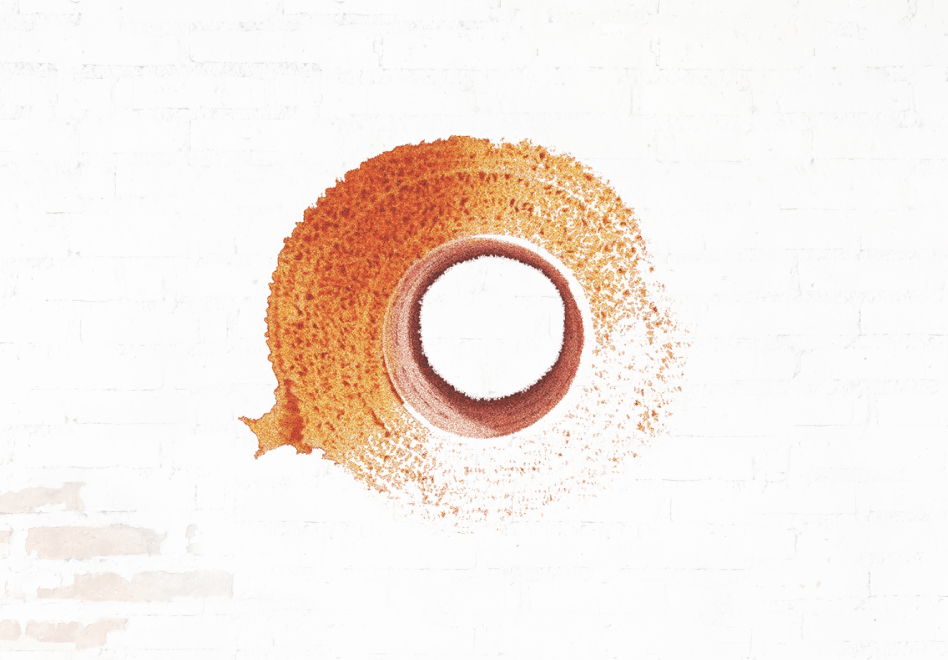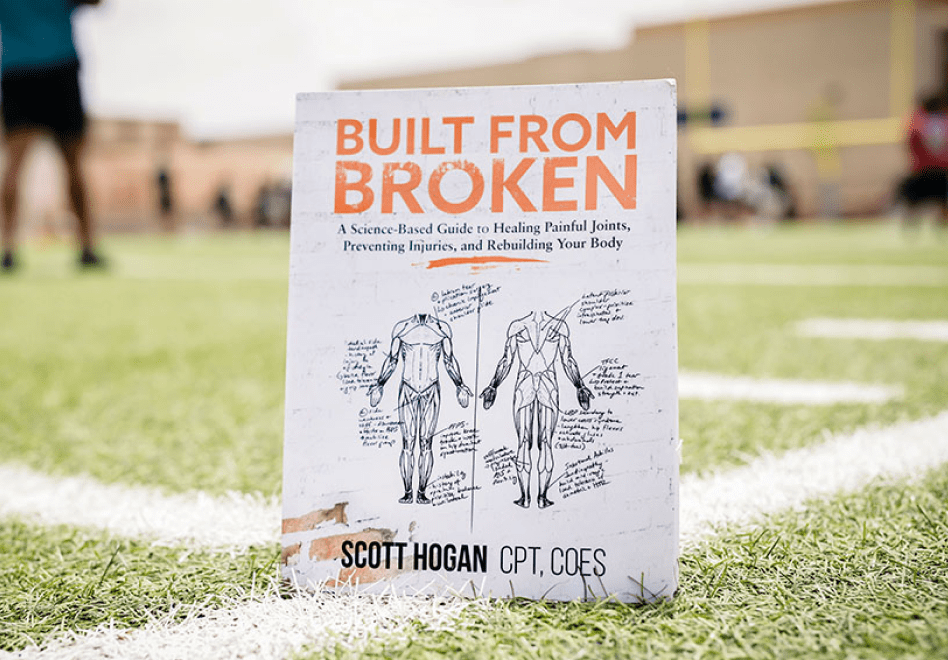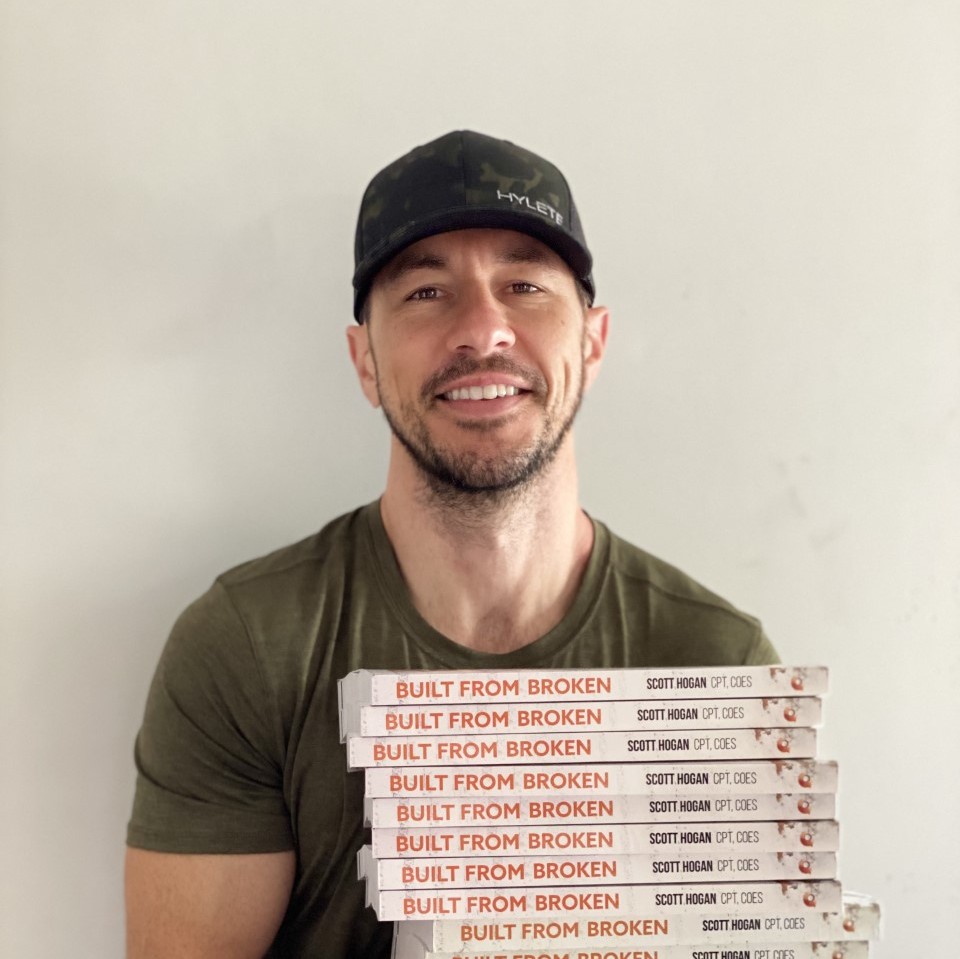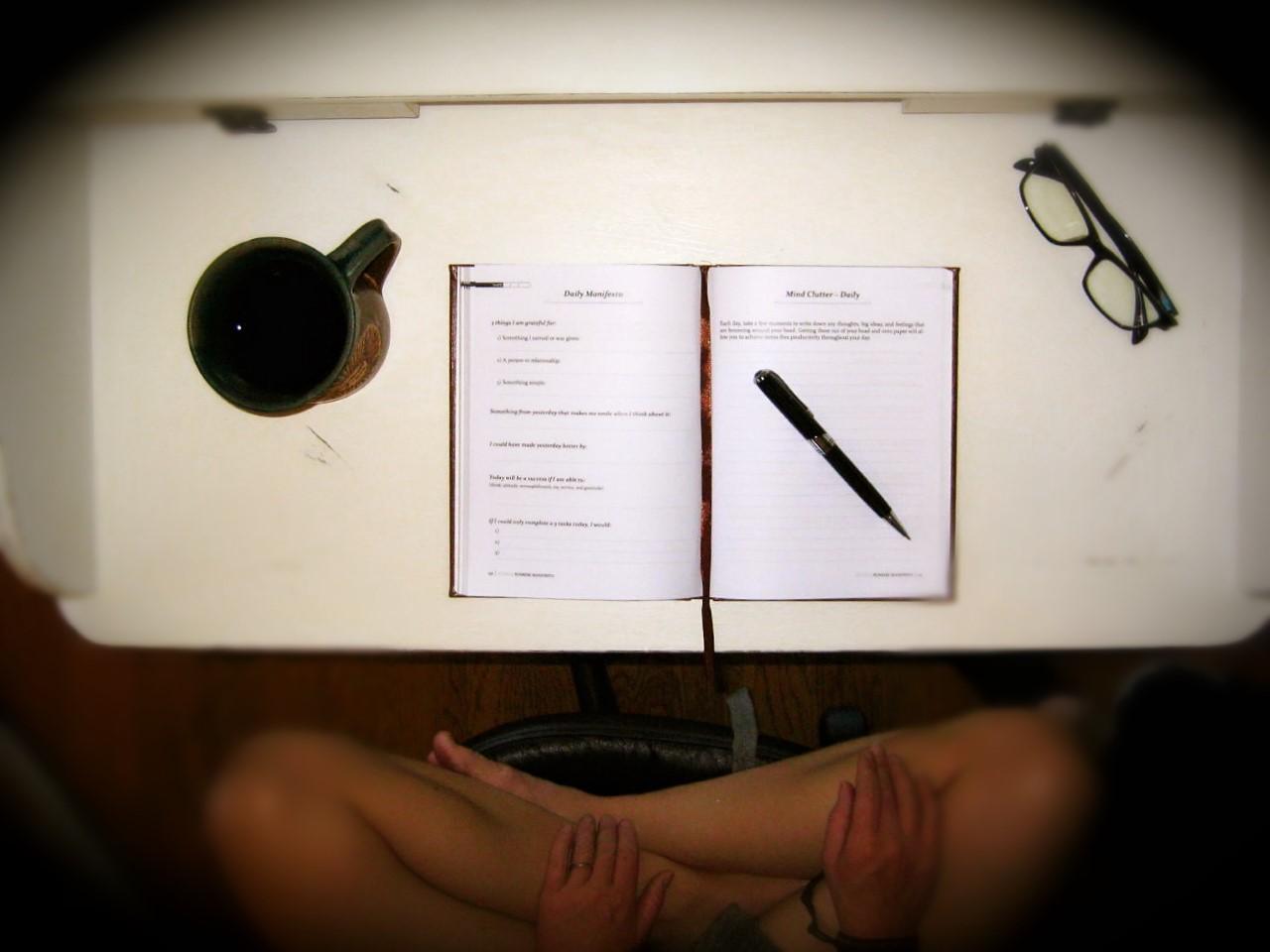
Be built (to last).
The right supplements can help you recover naturally and build a resilient body.

Supplement Quiz
Take this short quiz to discover the perfect supplements for your needs and goals.
About SaltWrap
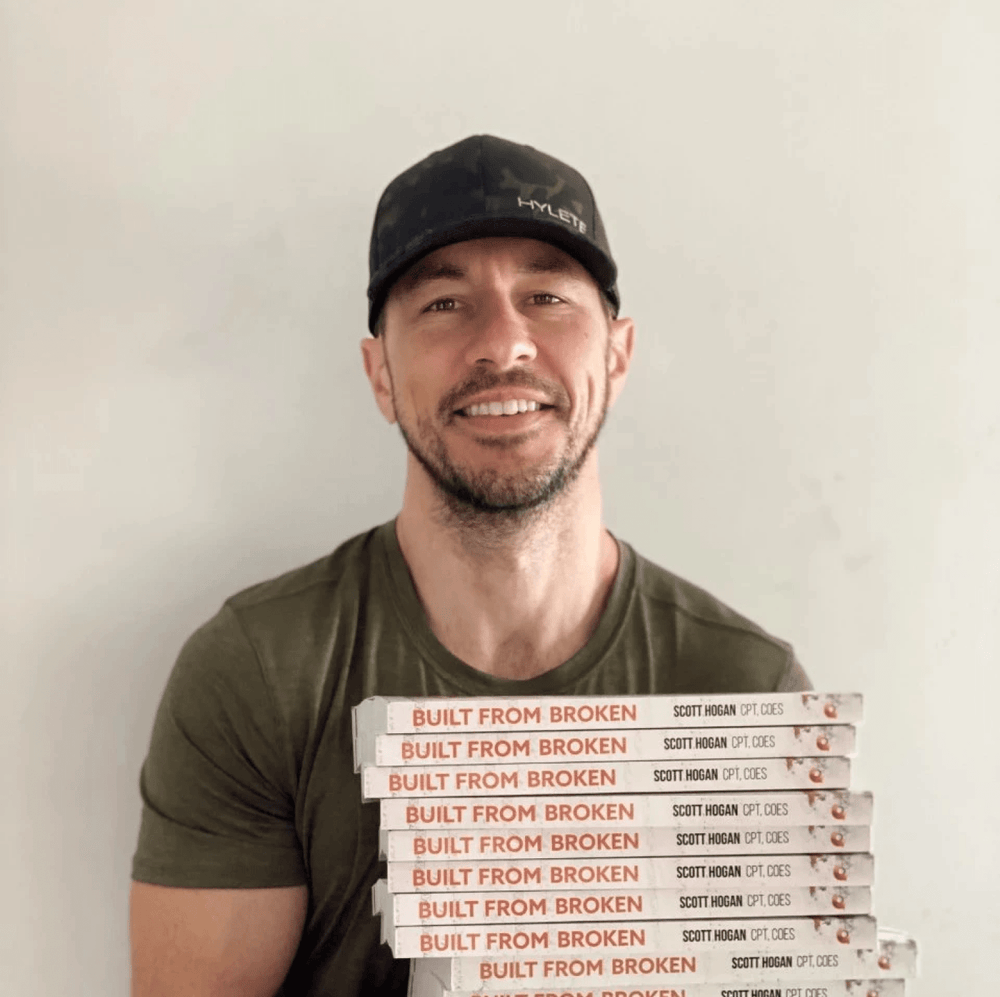
Built from Broken
Get the best-selling book from SaltWrap founder, Scott Hogan, and start rebuilding today.
My Five-Minute Routine for a Better Mindset
by Scott Hogan , ACE-CPT , COES
What do the first five minutes of your morning routine look like?
Scratch that.
After using the restroom, getting clothes on, pouring coffee, etc. What do the next five minutes look like?
For most people, it’s an unconscious warmup process for the day. And/or immediately opening your phone to read texts, social media, news, weather updates, and other notifications that are beamed directly into your brain bucket by someone else.
But there’s a better way to start your day. It takes five minutes and requires virtually zero discipline. And that's why I’ve followed this routine every morning, without fail, for the last year.
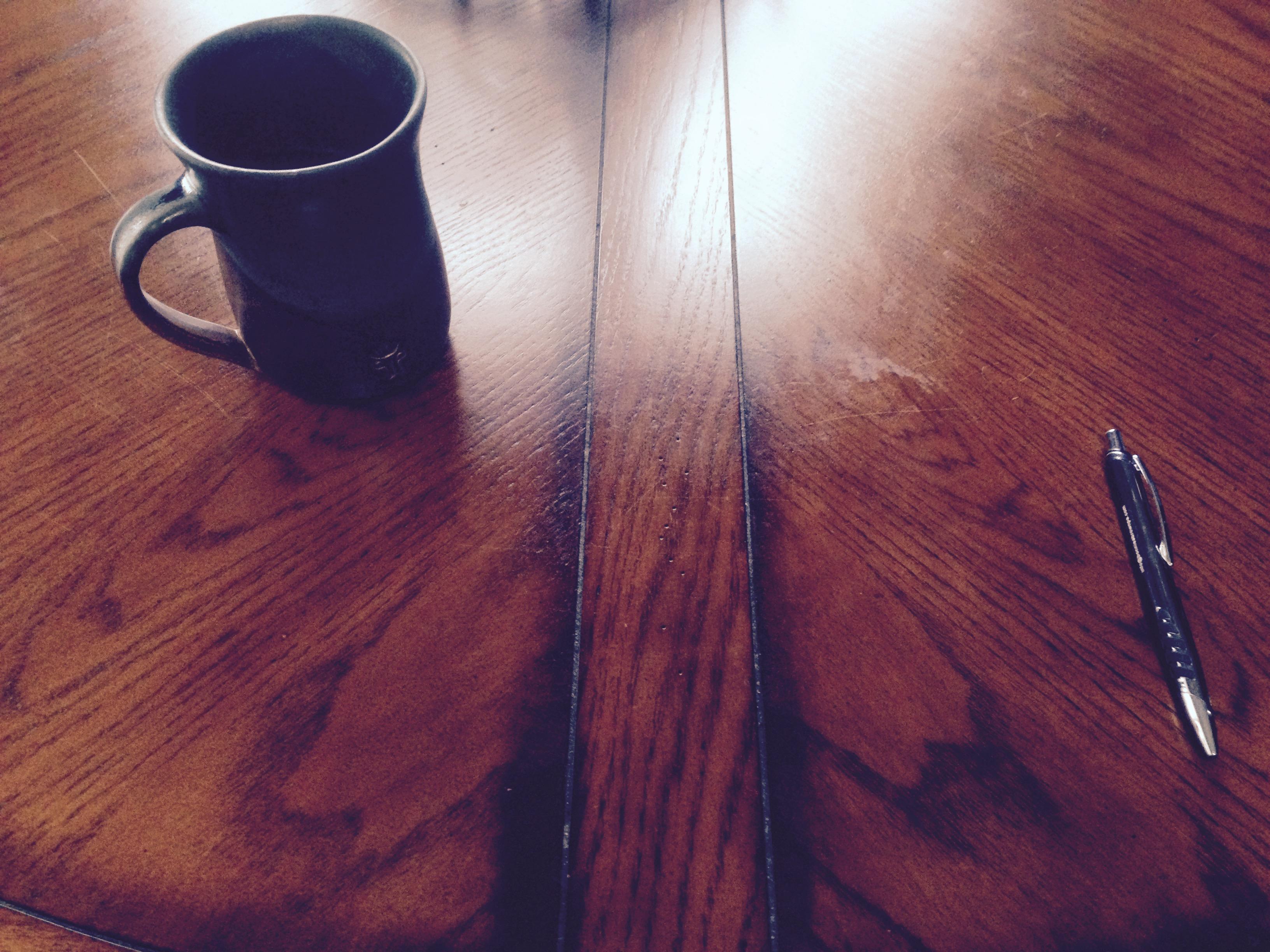
Why Most Morning Routines Fail
For most people – myself included – the default “routine” involves mindless processes they didn’t consciously choose, or (worse) immediately giving up control to some other device, thing, or person.
I’ve thought about this problem a lot. I even developed a morning journal to assemble the most powerful prompts, thinking frames, and routines that get the day started right.
But in reality, virtually all the well-intentioned advice on morning routines falls flat. It’s either mind-numbingly dull, unrealistic, too constricting, or crumbles in the face of an early-rising toddler asking for breakfast.
Less is more when it comes to morning routine adherence.
Still, I can’t help but experiment with morning routines. Not to maximize productivity. But to save me from myself.
That leads me to one of the most fashionable yet proven practices for starting your morning right: meditation.
Don’t worry. I won’t try to sell you on meditation. Because there’s an easier means to the same end.
Meditation is Incomplete
I’m not here to bash meditation. That would be ridiculous. There’s a reason elite athletes and top executives swear by it. And the research is rock solid. Meditation has clear, positive effects on stress response, cognitive performance, and overall quality of life. 1
But here’s the fatal flaw of meditation and why it’s an incomplete strategy for improving focus, increasing positive feelings, and lowering stress (i.e., what it’s designed to do):
Meditation is primarily a defensive strategy against negative thoughts and emotions.
Sure, sitting down daily and battling with your subconscious is an offensive strategy. Like author Dan Harris says in his bestselling book 10% Happier , meditation is more like taming a lion than sitting on a pillow in a state of mindless bliss.
But in my experience, the most valuable aspect of meditation is learning to stop reacting to thoughts that bubble up from my subconscious.
I’m no expert. And I have certainly not achieved enlightenment. Still, I do see clear changes in my day-to-day awareness — especially of the programmed behaviors that run in the background of my consciousness — from consistent daily meditation. I’m more capable of recognizing those knee-jerk reactions and patterns. This allows me to choose how I want to act instead of merely reacting.
I’ve also noticed a significant improvement in my ability to respond calmly and positively to stressful situations.
But as I mentioned a moment ago, there’s another tactic that is much more effective for producing right-thinking and positive thoughts. While meditation teaches you to detach from thoughts, there’s another tool that improves the quality of thoughts that bubble up in the first place.
For years, this was a missing piece for me. It felt like I was swatting away destructive thoughts the way you would a swarm of mosquitoes.
Planting Seeds
James Allen said, “A man's mind may be likened to a garden, which may be intelligently cultivated or allowed to run wild. But whether cultivated or neglected, it must, and will bring forth. If no useful seeds are put into it, then an abundance of useless weed seeds will fall therein, and will continue to produce their kind.”
Your thoughts are seeds. These seeds eventually bear fruit.
“Good thoughts bear good fruit, bad thoughts bad fruit.”
If you don’t like your circumstances (fruit), examine the thoughts (seeds) you are planting. And be brutally honest.
The tricky part is that, just like with actual plants, there is a delay between the planting of seeds and the growing of fruit.
Galatians Chapter 6 puts it more succinctly: “As ye sew, so shall you reap.”
At first glance, this sounds like merely a nod to personal responsibility. But it’s more specific than that.
What you feed your mind determines what comes out of your mind.
What comes out of your mind determines your attitude, beliefs, and actions. Your attitude, beliefs, and actions determine your results. You, as a logical being, see those results — and use them to reinforce whatever beliefs you had to start with.
If only on an intuitive level, most people can agree with this.
But like most philosophy, it’s a stretch between abstract concepts and boots-to-the-ground tactical implementation.
For this one, the implementation is deceptively simple. And it’s not the obvious path.
The point of leverage here is not to control your mind and “think positive” by sheer force of will. It’s to feed your mind good food. Or, sticking with the original metaphor, to plant the rights seeds in your mind. Actively choose positive inputs, knowledge, and the type of thinking and mental constructs you want to do more of.
Here’s the most straightforward method I’ve found. To me, it’s more powerful than meditation, coaching, or any other productivity hack out there.
Start your day with 5-10 minutes of reading and learning in categories that plant the right seeds.
Make it the very first thing you do after basic morning hygiene. Before checking your phone. Before thinking about the day’s obligations. And before your mind has a chance to whir into its usual patterns.
Unlike forced positive thinking or meditation, you are not giving your mind a chance to do anything but receive positive and generative input.
No room for B.S.
This can take the form of reading, listening to an audiobook, or watching a video. Doesn’t matter. But it should be planned in advance the night prior, and it should be done in a place without distraction.
If you can carve out just five minutes in the morning to do this, you’ll see changes in how you think within a week (if you choose the right content and plant the right seeds).
For me, those seeds focus on books about self-awareness, goal setting, relationships, and general personal development. This isn’t the time to learn about the latest technology or keep up with business trends. It’s about maintaining the innermost cogs of my psyche.
To start, I suggest committing to just five minutes each morning.
Pick out an audiobook you are interested in that fits the bill, and queue it up the night before. After pouring your coffee the next morning, sit down in a comfortable chair. Away from your work desk.
Don’t even turn the lights on. Plug in some headphones. Keep your eyes closed. And just listen. Let the seeds plant.
Go ahead and sip your coffee while listening, but don’t succumb to any distractions.
You have to be fully present and focused on what you’re listening to. It can’t just be background noise. It must have your full attention. (This is much harder than it sounds.)
The five minutes will go by in a blink. You will not have missed out on anything. Because during the first five minutes of the day, you’re essentially just waiting for the caffeine to kick in, right?
Commit to five minutes. That’s the minimum.
After a week, you can increase it to ten and start experimenting with other input forms (physical books, videos, music).
Related: This minimalist morning journal helps you focus on what's important.
Obstacles
There are three main obstacles here.
The first is your environment. If you aren’t the first person awake in your house, this routine is almost impossible to implement consistently. ( I suggest finding a way to be the first person up. )
The second obstacle may or may not affect you. But it did me. It takes a bit of ego-dropping to admit that your natural state of being is filled with weak, negative, destructive thoughts. That you could be better. And that your sheer will is not enough to win the battle against what Steven Pressfield calls “Resistance”: that dark force within us that attempts to stop us from expanding.
The third is the most insidious of all. It's the idea that you don't need to do this in the morning. You can listen to an audiobook or read for five minutes a day anytime. What's the big deal?
The big deal is that by deliberately planting the right seeds first, before all the machinery of your big beautiful blundering brain fires up, you can change the pattern of thoughts that bubble up from your subconscious.
Your mood, attitude, and beliefs are all fed by your daily thoughts. And those things determine what you do. It’s hard to understate the leveraged power of this habit.
Plant good seeds. Get good fruit.
Neglect to plant seeds, and weeds will grow. Then, those weeds will sprout their own seeds:
“…If no useful seeds are put into it, then an abundance of useless weed seeds will fall therein, and will continue to produce their kind.”
Something will be planted no matter what.
You get to decide whether that will be the seeds you determine or the weeds that grow in uncultivated ground.
Founder: Scott Hogan

I created SaltWrap to bring together the most practical ideas in therapeutic sports nutrition, corrective exercise, and functional fitness — with the goal of keeping you (and myself) strong, mobile, and built to last.
I've worked as an A.C.E. Certified Personal Trainer, Orthopedic Exercise Specialist, and nutritional supplement formulator.
But more importantly — I've spent most of my life battling injuries, joint pain, and just being plain beat up. So I know what it's like to struggle toward fitness goals.
SaltWrap is here to push you through injuries, setbacks and perceived physical limitations. To a place beyond what you think you're capable of. Sign up here to stay in the loop.
Learn more about my best-selling injury prevention and recovery book, Built from Broken.

